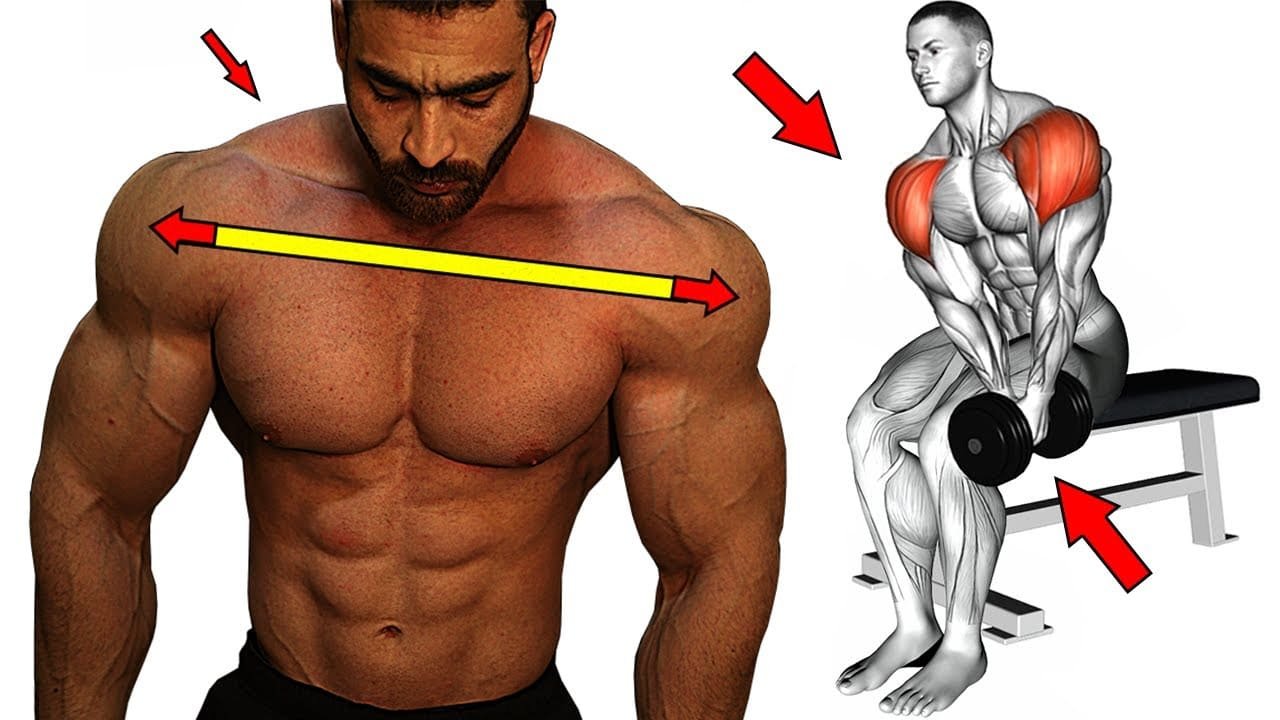Frozen Shoulder Exercises, medically called sticky capsulitis, is a case denoted using pain and immobility in the shoulder joint. This condition usually progresses via three levels: freezing, frozen, and thawing. During the freezing level, the ache steadily increases, and the variety of motion decreases. In the frozen stage, aches can also lower, but the stiffness remains, drastically restricting shoulder motion. The thawing stage involves a gradual return to ordinary shoulder movement. The precise reason for a Frozen Shoulder Exercises is frequently uncertain. Still, it could develop after an injury or a duration of immobility and is extra commonplace in humans with certain scientific situations like diabetes.

Importance of Exercise for Frozen Shoulder Relief
Exercise is essential in dealing with and improving Frozen Shoulder Exercises. Regular, gentle sports help to stretch and reinforce the muscular tissues around the shoulder joint, enhance flexibility, and decrease pain. The shoulder can become stiff and painful without a workout, prolonging restoration. By incorporating precise sporting activities into your everydaydaily routine, you can boost the recovery procedure and regain everyday shoulder characteristics.
Exercise 1: Pendulum Stretch
What is the Pendulum Stretch?
The pendulum stretch is an easy and gentle workout that helps grow the range of motion in the shoulder joint without causing undue stress. This workout is beneficial in the early stages of a Frozen Shoulder Exercises when the pain intensifies.
How to Perform the Pendulum Stretch
- Stand beside a table or counter and place your unaffected hand on it for support.
- Lean forward slightly, allowing your affected arm to hang down.
- Gently swing your arm in small circles, about a foot in diameter. Perform ten circles in each direction.
- Gradually increase the diameter of the circles as your shoulder loosens up.
Benefits of the Pendulum Stretch
The pendulum stretch facilitates loosening the shoulder joint, lowering stiffness, and enhancing blood movement to the affected area. It is a low-impact motion, making it ideal for the initial levels of restoration. Additionally, it enables getting the shoulder ready for extra intensive sporting activities.
Exercise 2: Towel Stretch
What is the Towel Stretch?
The towel space is a useful exercise that uses a towel to facilitate a mild stretch of the shoulder muscle groups. This exercise is terrific for improving shoulder flexibility and may be without problems executed at domestic with minimum equipment.
How to Perform the Towel Stretch
- Take a towel and maintain one lead to your affected hand.
- Drape the towel over your shoulder and clutch the alternative. Give up together with your unaffected hand.
- Pull the towel with your unaffected hand to softly stretch your affected shoulder.
- Hold the period for 15-30 seconds and reprise 10-20 times.
Benefits of the Towel Stretch
The towel stretch enhances flexibility and range of movement inside the shoulder. It targets the muscle tissue and ligaments that frequently grow tight due to a Frozen Shoulder Exercises. Regularly doing this exercise can help lower stiffness and enhance normal shoulder features.

Exercise 3: Finger Walk
What is the Finger Walk?
The finger walk exercise entails using your fingers to “stroll” up a wall, which allows for gradually growing shoulder mobility. This exercise is particularly useful for enhancing the overhead range of motion in the shoulder.
How to Perform the Finger Walk
- Stand about three-quarters of an arm’s length away from a wall.
- Place your affected hand on the wall at waist level.
- Use your fingers to walk your hand up the border as tall as you comfortably can.
- Slowly decrease your arm back off, using your fingers to step down the wall.
- Repeat 10-20 instances.
Benefits of the Finger Walk
This exercise promotes peaceful motion and extension of the shoulder, helping to interrupt the stiffness and improve mobility over the years. It is an effective way to push the shoulder muscle tissues without putting excessive strain on the joint.

Exercise 4: Cross-Body Stretch
What is the Cross-Body Stretch?
The pass-body stretch entails pulling your arm across your body to stretch the shoulder muscle tissues and improve flexibility. This exercise is easy yet powerful in relieving shoulder stiffness and pain.
How to Perform the Cross-Body Stretch
- Sit or stand effectively.
- Use your unaffected hand to raise your affected arm on the elbow and produce it throughout your frame.
- Hold the stretch for 15-30 seconds.
- Repeat 10-20 times.
Benefits of the Cross-Body Stretch
The skip-frame stretch enables stretching of the shoulder muscles, reducing stiffness and growing the style of motion. It’s a clean and effective manner to alleviate aches and decorate flexibility, making performing each day’s sports much less complicated.
Exercise 5: Armpit Stretch
What is the Armpit Stretch?
The armpit stretch targets the muscle tissues across the shoulder by focusing on the area below the arm that can regularly become tight and confined. This exercise is especially effective for improving shoulder flexibility and reducing aches.
How to Perform the Armpit Stretch
- Use your unaffected hand to lift your affected arm onto a shelf or desk at the chest top.
- Gently bend your knees, commencing up your armpit region.
- Hold the stretch for 15-30 seconds.
- Repeat 10-20 times.
Benefits of the Armpit Stretch
This exercise allows the muscle groups and tendons across the shoulder to loosen, enhancing flexibility and lowering pain. It’s particularly powerful in targeting tough-to-attain areas contributing to Frozen Shoulder Exercises stiffness. Regularly performing this workout can help appreciably improve shoulder mobility.
Additional Tips for Managing Frozen Shoulders
Staying Consistent with Exercises
Consistency is key to handling Frozen Shoulder Exercises. Make sure to exercise regularly, as prescribed by your healthcare company. Consistent effort will yield higher outcomes and faster relief. Skipping physical games can result in elevated stiffness and prolonged restoration time.
Using Heat and Cold Therapy
Alternating between warm and cold remedies can help reduce irritation and aches. Use a heating pad to loosen tight muscles before a workout, and apply ice occasionally to lessen any swelling. This mixture can make your sporting activities more powerful and reduce pain.
Maintaining Good Posture
Poor posture can exacerbate shoulder ache. Be mindful of your posture throughout the day, particularly when sitting or running at a desk. Keeping your shoulders back and your backbone aligned can help prevent additional stress on your shoulder. Consider ergonomic adjustments on your computing device if needed.

Seeking Professional Guidance
If you’re uncertain about how to carry out any physical activities or experience expanded aches, seek advice from a physical therapist or healthcare company. They can provide personalized guidance and regulate your workout regimen as needed. Professional supervision can ensure you are doing the sports effectively and adequately.
Conclusion
Healing from a Frozen Shoulder Exercises can be slow and frustrating, but including these five routines in your daily routine can make a marked difference. Remember to be patient and persistent. Gradually, you will notice improvements in your shoulder mobility and a reduction in pain. Exercise, good posture, heat and cold therapy, and professional guidance can help you regain full use of your shoulder.
FAQs about Frozen Shoulder Exercises
How long does it take to recover from a frozen shoulder?
Healing time can vary, but most people see extensive improvement within 1-3 years with consistent remedies and sporting activities. The period of every degree (freezing, frozen, and thawing) can range from individual to person.
Can frozen shoulder exercises make the pain worse?
Some discomfort is normal when beginning physical activities; however, if you enjoy intense pain, it's essential to prevent it and seek advice from a healthcare provider. Pain should no longer be sharp or unbearable; sporting activities should be achieved lightly and within your consolation range.
Is it ok to apply ache relief medicine while doing those sporting activities?
Yes, over-the-counter ache comfort medications can be used to manage pain and irritation. However, consulting with your health practitioner earlier than beginning any medication is first-rate. Pain relief lets you perform sporting activities more quite simply.
When do I need to see a doctor for my frozen shoulder?
If your symptoms and signs are excessive, persist regardless of domestic treatment, or substantially intervene together with your daily activities, it’s critical to seek clinical recommendation. A healthcare expert can offer a remedy plan and help you address headaches.





